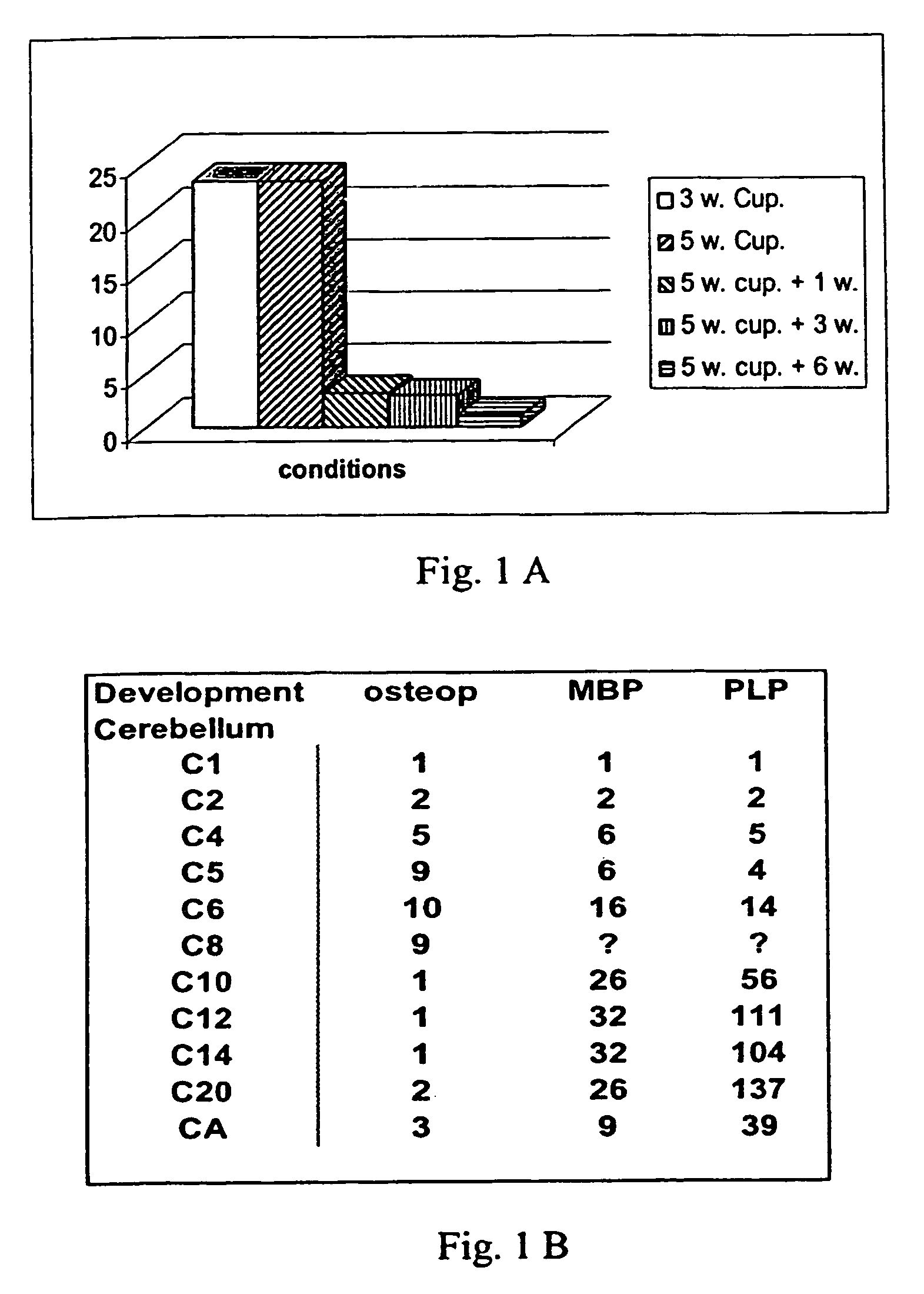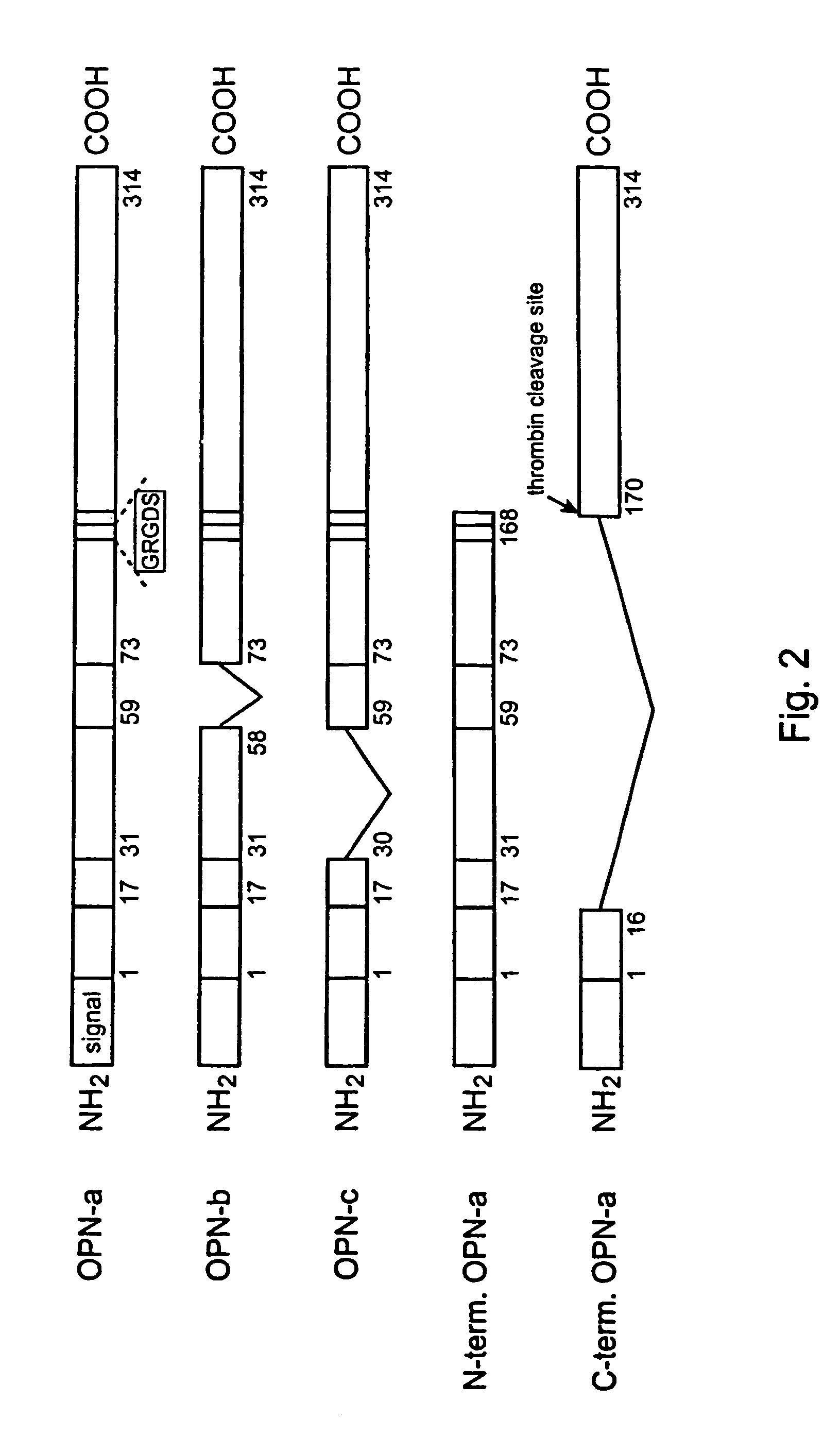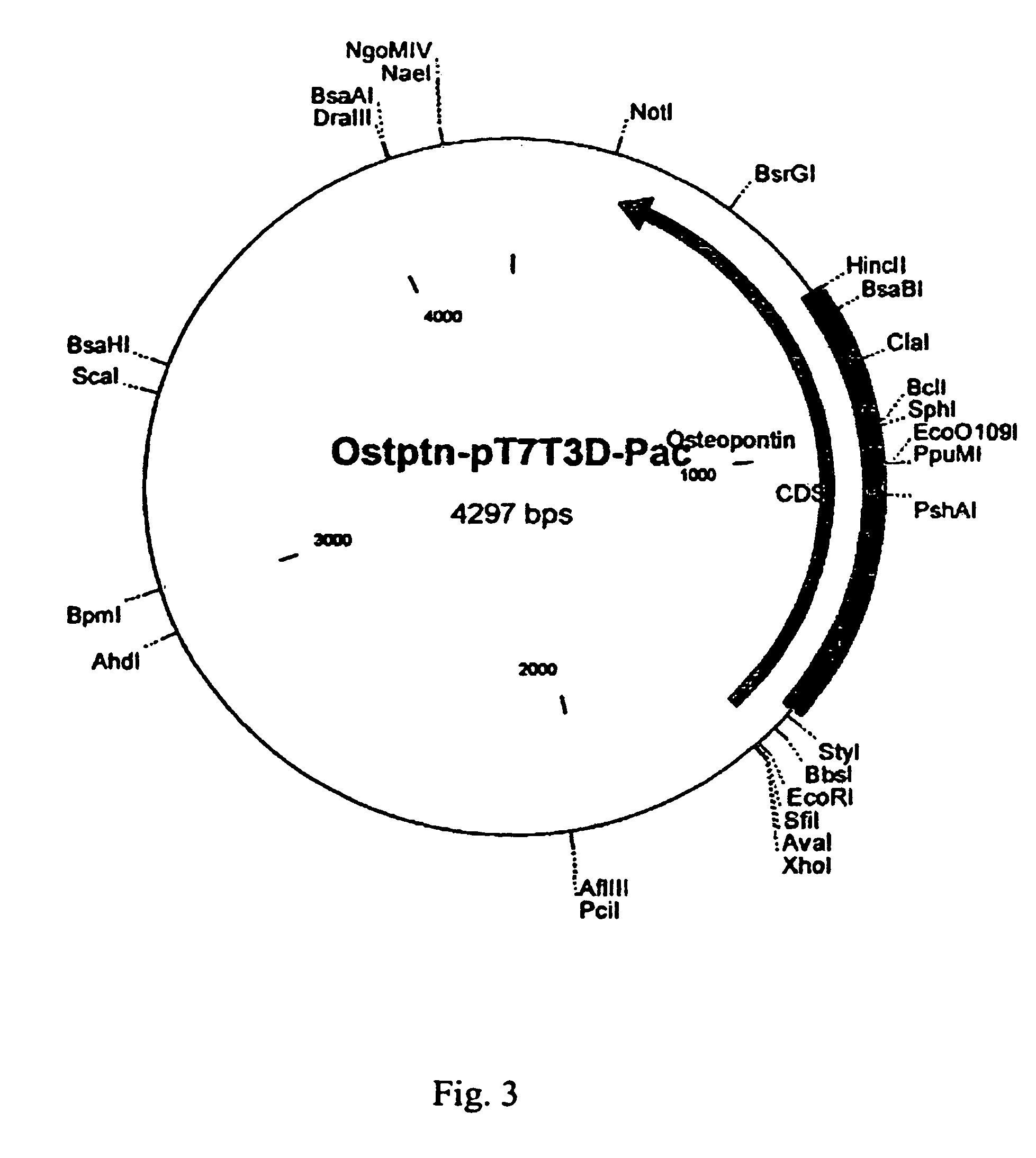Use of osteopontin for the treatment and/or prevention of neurologic diseases
a neurologic disease and osteopontin technology, applied in the field of neurologic diseases and disorders, can solve the problems of loss of neurologic function, paralysis and death, and high vulnerability of oligodendrocytes to glutamate application, and achieve the effects of promoting myelination and nerve regeneration, promoting glial cell proliferation and differentiation, and promoting neuroprotection
- Summary
- Abstract
- Description
- Claims
- Application Information
AI Technical Summary
Benefits of technology
Problems solved by technology
Method used
Image
Examples
example 1
Osteopontin is Differentially Expressed in in Vivo and in Vitro Models of Demyelinating Diseases
[0271]Methods
[0272]In Vitro Model Systems
[0273]The Oli-neu cell line has been established via immortalization of oligodendroglial precursors with a replication-defective retrovirus encoding the t-neu oncogene, a constitutively active tyrosine kinase: this cell line was shown to be induced to differentiate in the presence of 1 mM dibutyryl-cAMP in the culture medium (Jung et al., 1995). This provided the possibility of studying oligodendrocytes as an isolated cell type.
[0274]The morphology and antigenic characteristics of cells of the mouse oligodendrocyte cell line Oli-neu, derived from A2B5 mouse oligodendrocyte precursors, in the untreated condition and after 6 days of pro-differentiating treatment with 1–5 mM dibutyryl-cAMP differs substantially. Whereas untreated Oli-neu cells have a round shape and are mostly bipolar like oligodendrocyte precursor cells, cAMP treated cells generate m...
example 2
Confirmation of Differential Gene Expression of Osteopontin by Real-Time Quantitative Reverse Transcriptase (RT)-PCR Assay (TaqMan®)
[0330]Methods
[0331]cDNA Template Generation
[0332]The cDNA templates for TaqMan® analysis were generated from total RNA samples via reverse-transcription (RT) using the TaqMan® reverse transcription reagents (P / N N808–0234). All RT reactions were performed in a 100-μl volume containing: 10 μl TaqMan RT buffer, 22 μl 25 mM MgCl2 solution (5.5 mM), 20 μl deoxyNTPs mixture (500 μM of each dNTP), 5 μl random hexamers (2.5 μM), 2 μl RNase inhibitor (0.4 U / μl), 2.5 μl. MultiScribe™ Reverse Transcriptase (1.25 U / μl) and 38.5 μl RNA sample (1 μg total) in RNase-free H2O. Reactions were performed on an Eppendorf MasterCycler at 25° C. for 10 min (incubation step), 48° C. for 30 min (reverse transcription), and 95° C. for 5 min (inactivation step). All synthesized cDNAs were stored at −20° C. in 20 μl volumes.
[0333]Primer Design and Verification
[0334]SYBR Green Re...
example 3
Confirmation of Differential Osteopontin Expression by Northern Blot
[0364]Methods
[0365]Blot Preparation
[0366]For specific genes, tissue specificity of expression was assayed using mouse Multi-Tissue Northern blots (Clontech Labs, 1020 East Meadow Circle, Palo Alto, Calif.). These contained 2 μg of poly(A)+ RNA per lane from different tissues of the adult mouse. Separate blots were prepared for analysis of differential gene expression in both in vitro and in vivo situations. RNA isolated from the brains of cuprizone treated mice at 3 weeks, 5 weeks and the 1, 3 and 6-week time points during the recovery process (up to 6 weeks) was used on one set of blots. Whole brain RNA from different postnatal day stages was used on a second set. Finally, a time-course series of RNAs was prepared from Oli-neu cells grown in culture and treated for different lengths of time with dibutyryl-cAMP. This RNA was used to prepare a third set of blots. New blots were used with each gene-specific probe to e...
PUM
| Property | Measurement | Unit |
|---|---|---|
| Tm | aaaaa | aaaaa |
| concentration | aaaaa | aaaaa |
| volume | aaaaa | aaaaa |
Abstract
Description
Claims
Application Information
 Login to View More
Login to View More - R&D
- Intellectual Property
- Life Sciences
- Materials
- Tech Scout
- Unparalleled Data Quality
- Higher Quality Content
- 60% Fewer Hallucinations
Browse by: Latest US Patents, China's latest patents, Technical Efficacy Thesaurus, Application Domain, Technology Topic, Popular Technical Reports.
© 2025 PatSnap. All rights reserved.Legal|Privacy policy|Modern Slavery Act Transparency Statement|Sitemap|About US| Contact US: help@patsnap.com



